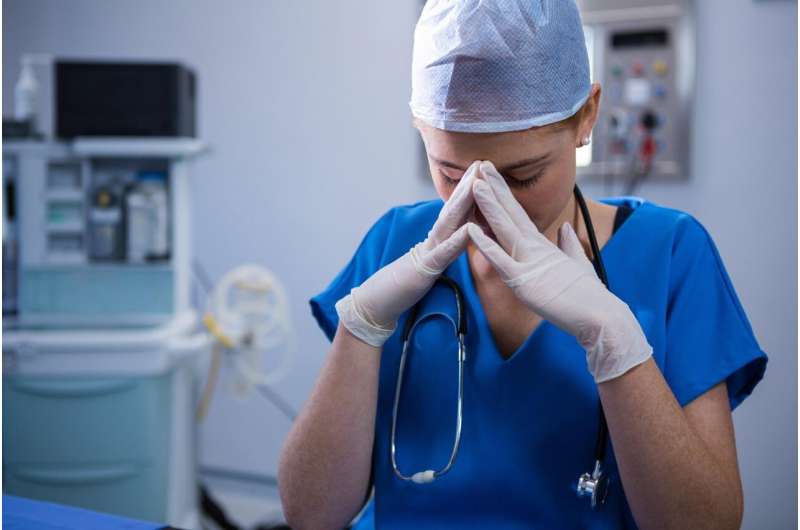
Burnout has increased among anesthesiologists since the start of the COVID-19 pandemic in 2020, according to a study published in the November issue of Anesthesiology.
Anoushka M. Afonso, M.D., from the Memorial Sloan Kettering Cancer Center in New York City, and colleagues surveyed the American Society of Anesthesiologists U.S. attending anesthesiologist members in November 2022 to assess how burnout changed since the onset of the COVID-19 pandemic. The analysis included 2,698 respondents.
The researchers found that 67.7 percent of respondents were at high risk for burnout and 18.9 percent had burnout syndrome. More than three-quarters of respondents (78.4 percent) reported experiencing recent staffing shortages, and more than one-third (36.0 percent) said they were likely to leave their job within the next two years.
Compared with those unlikely to leave, those likely to leave their job in the next two years had a significantly higher prevalence of high risk for burnout (55.7 versus 78.5 percent) and burnout syndrome (13.3 versus 24.3 percent).
Perceived lack of support at work (odds ratio, 9.2) and staffing shortages (odds ratio, 1.96) were most strongly associated with high risk for burnout, while perceived lack of support at work (odds ratio, 6.3) was most strongly associated with burnout syndrome.
“Burnout is more prevalent in anesthesiology since early 2020, with workplace factors of perceived support and staffing being the predominant associated variables,” the authors write.
More information:
Anoushka M. Afonso et al, U.S. Attending Anesthesiologist Burnout in the Postpandemic Era, Anesthesiology (2023). DOI: 10.1097/ALN.0000000000004784
Copyright © 2023 HealthDay. All rights reserved.
Source: Read Full Article
